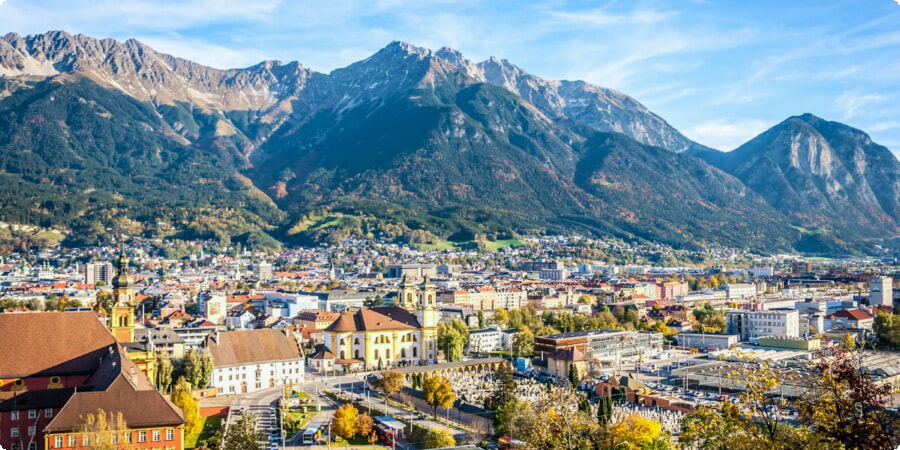Nestled in the heart of the Austrian Alps, Innsbruck offers a captivating blend of historical depth and contemporary flair. This enchanting city, the capital of Tyrol, is a living testament to the evolution of architectural styles spanning from the medieval era to the modern day. Each street, building, and square tells a story, showcasing the artistry and ingenuity of different periods. In this long-read, we’ll embark on a journey through time, exploring the rich architectural tapestry that makes Innsbruck a must-visit destination for history buffs and architecture enthusiasts alike.
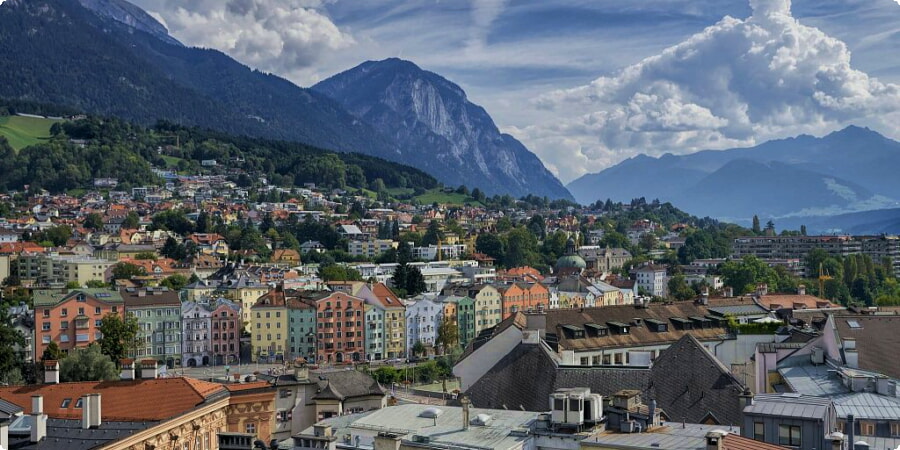
Medieval Marvels: Innsbruck’s Early Architecture
Innsbruck’s roots trace back to the Middle Ages, a period that has left an indelible mark on the city’s architectural landscape. Walking through the Old Town, one is immediately transported to a bygone era where every stone and alleyway whispers tales of the past.
Hofburg Palace stands as a prominent example of Innsbruck’s medieval architecture. Originally built in the 15th century, this grand structure has witnessed countless historical events and transformations. Its medieval origins are still visible, particularly in the fortified towers and thick walls that give it a distinct, sturdy appearance. Hofburg Palace was later modified to incorporate Baroque elements, making it a fascinating blend of styles.
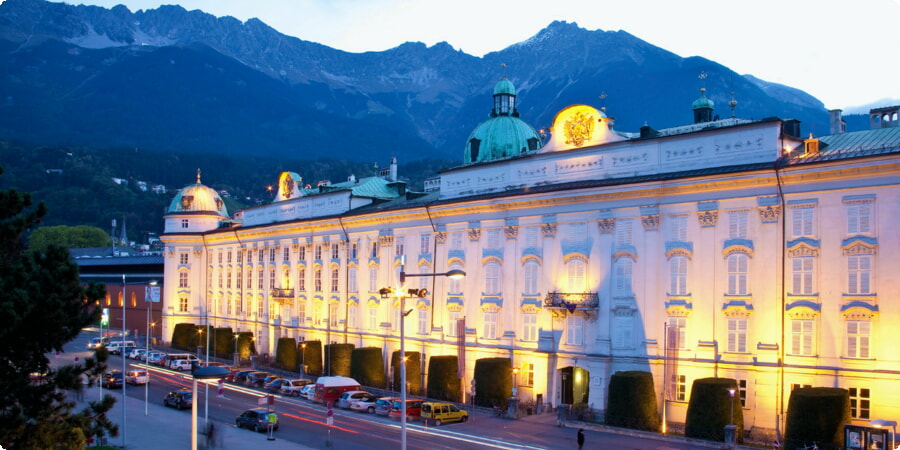
Just a short walk away, you’ll find the Ottoburg Tower, a classic example of medieval defensive architecture. Built in the early 15th century, this sturdy stone structure once served as a watchtower, guarding the city against invaders. Today, it stands as a testament to Innsbruck’s medieval past and offers a unique glimpse into the city’s early architectural endeavors. You can locate the Ottoburg Tower on Google Maps.
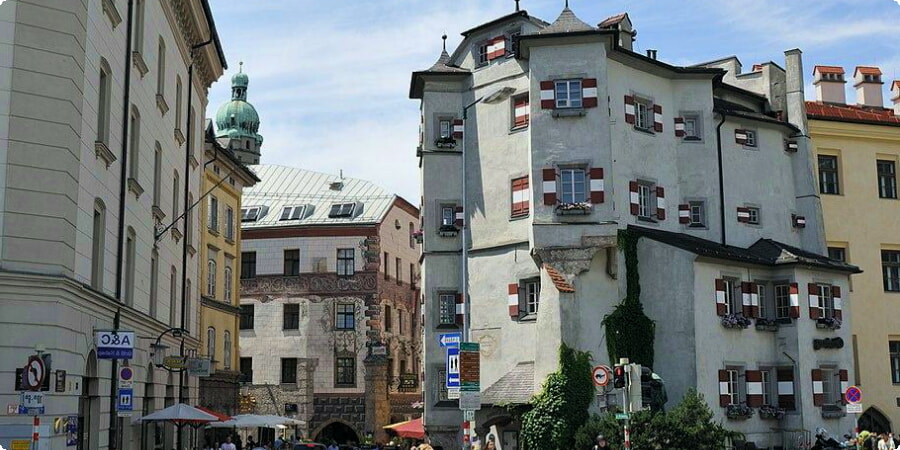
Strolling through the Old Town Innsbruck (Altstadt), you’ll encounter a maze of narrow, cobblestone streets lined with colorful buildings that have stood the test of time. The Gothic arcades, intricately carved facades, and charming courtyards transport visitors to the Middle Ages, making it a perfect starting point for exploring Innsbruck’s architectural heritage.
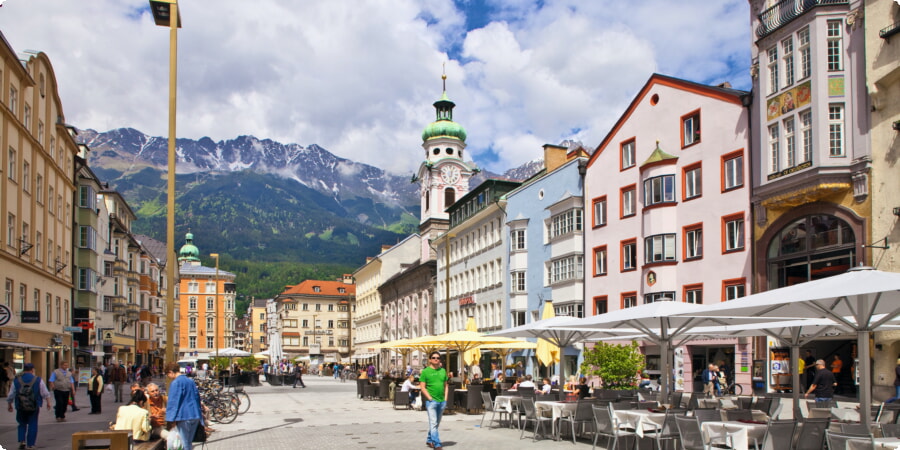
Gothic Grandeur: The Rise of Ornamentation
As we move forward in time, Innsbruck’s architectural narrative embraces the ornate and intricate styles of the Gothic period. The city’s skyline is punctuated by structures that showcase the grandeur and detailed craftsmanship typical of this era.
The Innsbruck Cathedral (Dom zu St. Jakob) is a prime example of Gothic architecture in Innsbruck. Originally built in the 12th century and later modified in the Gothic style, this majestic cathedral is adorned with pointed arches, ribbed vaults, and intricate stained glass windows that narrate biblical stories. The cathedral’s soaring spires and detailed stonework exemplify the grandeur and artistic flair of Gothic design. Explore its history on Wikipedia.
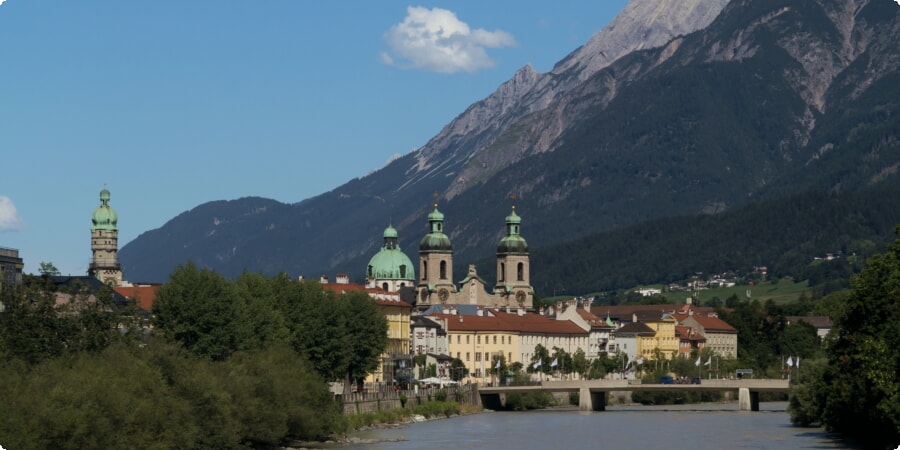
Another iconic Gothic landmark is the Golden Roof (Goldenes Dachl), a late Gothic masterpiece that has become one of Innsbruck’s most famous symbols. This three-story balcony is adorned with 2,657 fire-gilded copper tiles, creating a shimmering effect that captures the eye. Built in the early 16th century, it served as a royal box for Emperor Maximilian I to watch tournaments and festivals in the square below. The Golden Roof is located in the heart of the Old Town and can be viewed on Google Maps.
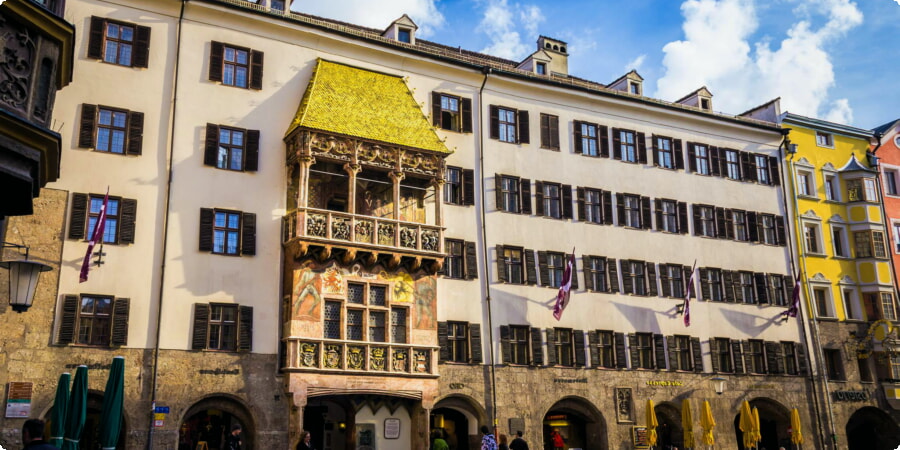
Wandering through the streets, you’ll notice the Gothic architectural elements that permeate the cityscape, from the pointed archways and steeply pitched roofs to the elaborate facades that tell stories of Innsbruck’s rich history. The intricate details and grandiose structures of this period reflect the city’s burgeoning artistic and cultural ambitions during the late Middle Ages.
Renaissance Revival: Embracing Classicism
The transition from Gothic to Renaissance architecture in Innsbruck marked a significant shift towards the revival of classical elements and an emphasis on symmetry, proportion, and harmony. This period saw the infusion of Italian Renaissance influences, leading to the creation of some of the city’s most elegant and refined buildings.
Ambras Castle (Schloss Ambras) is a shining example of Renaissance architecture in Innsbruck. Originally a medieval fortress, it was transformed into a splendid Renaissance palace by Archduke Ferdinand II in the 16th century. The castle features a stunning collection of art and armor, as well as beautifully manicured gardens that exemplify the Renaissance ideals of beauty and order. Learn more about Ambras Castle on Wikipedia and find its location on Google Maps.
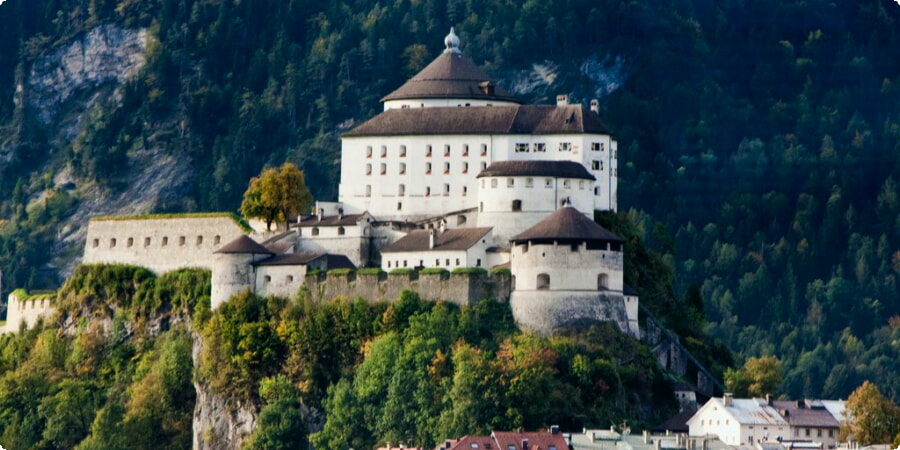
Innsbruck’s Renaissance architecture is characterized by the use of classical elements such as columns, arches, and domes, reflecting the influence of ancient Roman and Greek styles. The city’s embrace of Renaissance principles brought about a new era of artistic and architectural refinement, setting the stage for future developments.
Baroque Brilliance: A Touch of Grandeur
The Baroque period ushered in an era of grandeur and opulence in Innsbruck, characterized by dramatic architectural elements and elaborate decorations that aimed to inspire awe and reverence. This style is well-represented in several of the city’s most magnificent buildings.
Hofkirche (Court Church) is a prime example of Baroque architecture in Innsbruck. Originally built in the Gothic style, the church underwent significant Baroque modifications in the 17th century. The interior is a visual feast, with its ornate stucco work, grand altarpieces, and intricate frescoes that depict scenes from the life of Emperor Maximilian I. The Hofkirche is also home to the emperor’s elaborate cenotaph, surrounded by larger-than-life bronze statues. More about the Hofkirche can be found on Wikipedia.
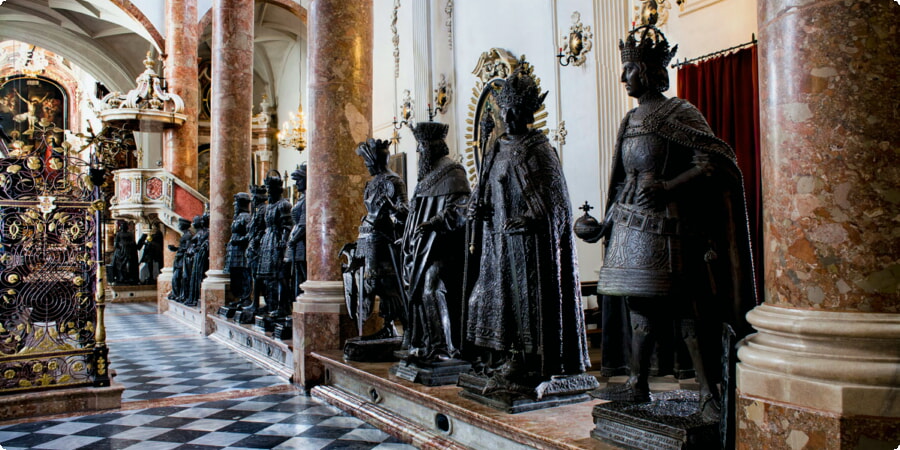
The Imperial Court Church (Kaiserliche Hofkirche) is another Baroque marvel that showcases the period’s architectural splendor. The church’s interior is adorned with rich decorations, including gilded stucco, marble columns, and elaborate frescoes. The high altar, with its intricate carvings and stunning artwork, is a testament to the craftsmanship and artistic ambition of the Baroque era. You can visit the Imperial Court Church on Google Maps.
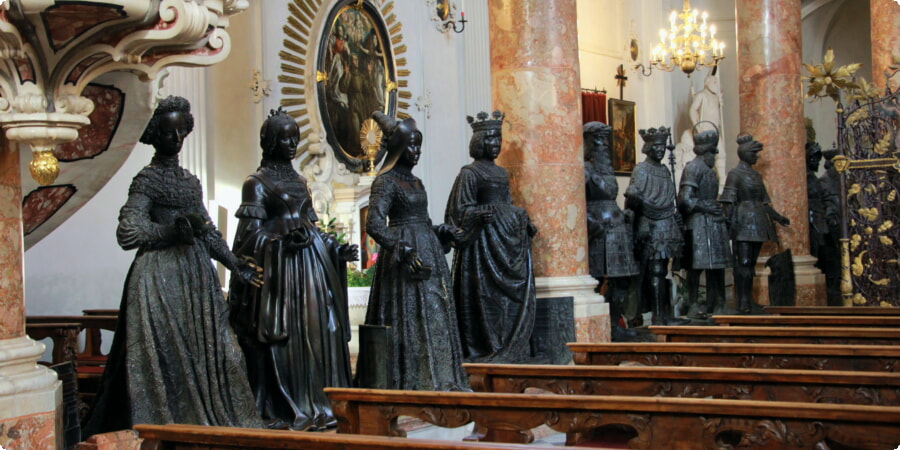
Baroque architecture in Innsbruck is characterized by its dramatic use of light and shadow, bold structural forms, and lavish decorations that create a sense of movement and grandeur. The city’s Baroque landmarks stand as a testament to the artistic and cultural exuberance of this period, offering a captivating glimpse into the past.
Neoclassical and Historicist Highlights
As we move into the 18th and 19th centuries, Innsbruck’s architectural landscape evolves once again, embracing the clean lines and classical influences of the Neoclassical period, as well as the revivalist trends of the Historicist era. This period saw a renewed interest in ancient architectural styles, resulting in buildings that blend classical elegance with modern sensibilities.
The Landesmuseum Ferdinandeum is a striking example of Neoclassical architecture in Innsbruck. This cultural institution, founded in the 19th century, features a grand facade with classical columns and pediments, reflecting the influence of ancient Greek and Roman architecture. The museum’s design emphasizes symmetry, proportion, and simplicity, hallmarks of the Neoclassical style. Explore the museum’s history on Wikipedia.
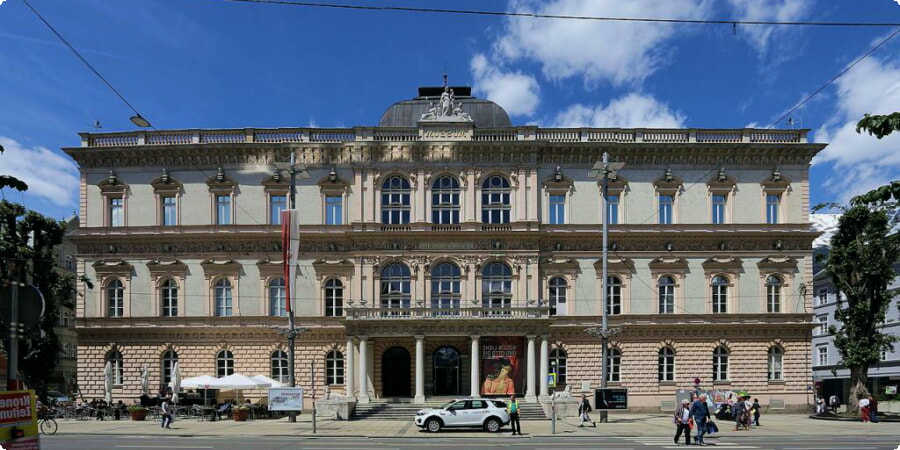
The Triumphal Arch (Triumphpforte) is another significant Neoclassical landmark in Innsbruck. Erected in the mid-18th century to commemorate the marriage of Archduke Leopold to Maria Ludovica of Spain, this monumental structure features classical elements such as columns, arches, and decorative reliefs that celebrate the grandeur and historical significance of the event. The Triumphal Arch is located at the southern end of Maria-Theresien-Strasse and can be viewed on Google Maps.
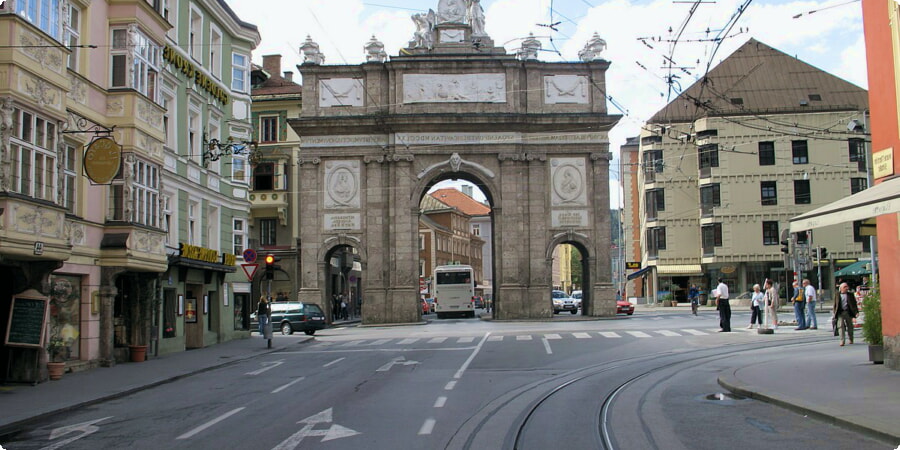
During this period, Innsbruck also saw the rise of Historicist architecture, which involved the revival and reinterpretation of various historical styles. Buildings from this era often blend elements from different architectural periods, creating a unique fusion that reflects both a respect for tradition and a desire for innovation. This eclectic approach resulted in a diverse architectural landscape that continues to define Innsbruck’s cityscape today.
Modernist Marvels: Innsbruck’s 20th Century Transformation
The 20th century brought significant changes to Innsbruck’s architectural landscape, with the advent of modernist principles that emphasized functionality, simplicity, and the innovative use of materials. This period saw the construction of several iconic buildings that reflect the city’s embrace of modernity and progress.
One of the most notable examples of modernist architecture in Innsbruck is the Congress Innsbruck. This multi-functional building, designed in the 1970s, features clean lines, minimal ornamentation, and a focus on practical design. The Congress Innsbruck serves as a hub for cultural and business events, reflecting the modernist ideals of form following function. More about this venue can be found here.
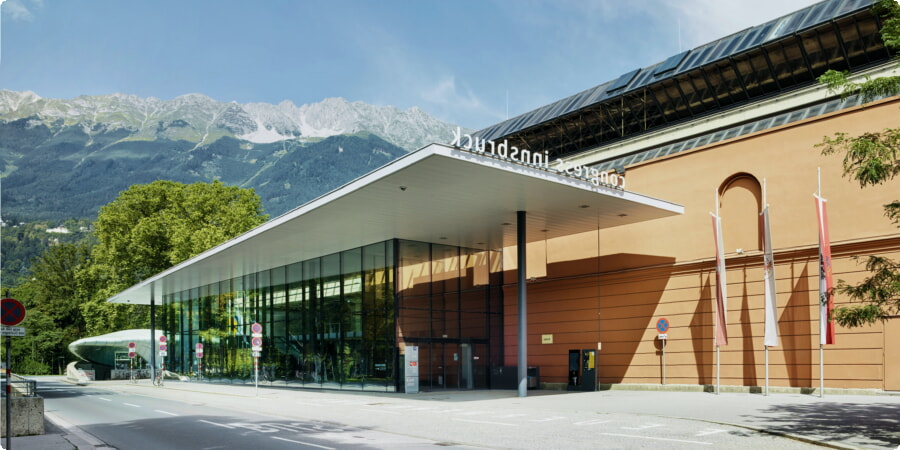
The Nordkette Cable Car Stations, designed by renowned architect Zaha Hadid, are another striking example of modernist architecture in Innsbruck. These futuristic stations, which connect the city to the Nordkette mountain range, feature bold, sweeping forms and innovative use of materials such as glass and steel. The design seamlessly blends with the surrounding natural landscape, creating a harmonious fusion of modern architecture and alpine scenery. View the Nordkette Cable Car Stations on Google Maps.
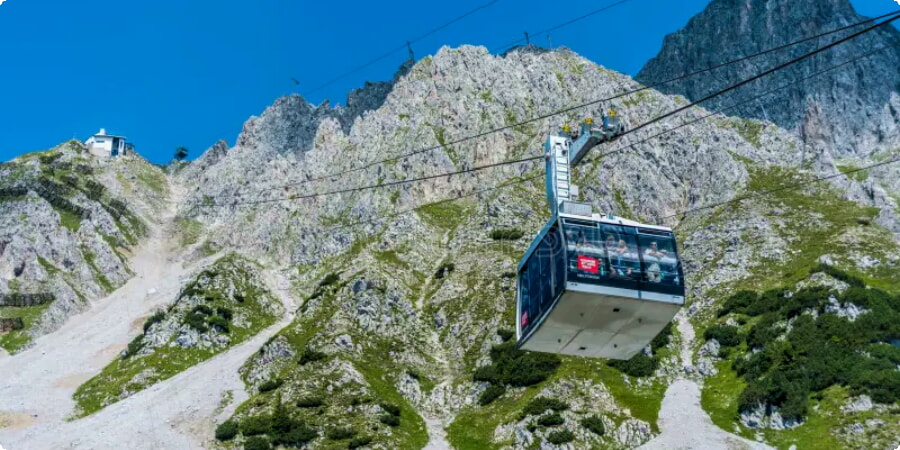
For visitors looking to explore Innsbruck and its surroundings, renting a car is a convenient option that offers flexibility and freedom. To make the most of your visit, consider hiring a car at Innsbruck Airport through Solrentacar, which provides a range of options to suit your travel needs.
Innsbruck’s modernist architecture reflects the city’s forward-thinking spirit and commitment to innovation, making it a fascinating destination for those interested in contemporary design and urban development.
Contemporary Creations: Innsbruck in the 21st Century
Innsbruck’s architectural journey continues into the 21st century, with a focus on contemporary design that emphasizes sustainability, innovation, and aesthetic appeal. The city’s modern architecture blends seamlessly with its historical roots, creating a dynamic and ever-evolving urban landscape.
The Bergisel Ski Jump, designed by Zaha Hadid, is a prime example of contemporary architecture in Innsbruck. This striking structure features a sleek, curvilinear design that stands in stark contrast to the surrounding mountainous landscape. The ski jump offers panoramic views of the city and the Alps, making it a popular destination for both architecture enthusiasts and sports fans. More about the Bergisel Ski Jump can be found on Wikipedia.
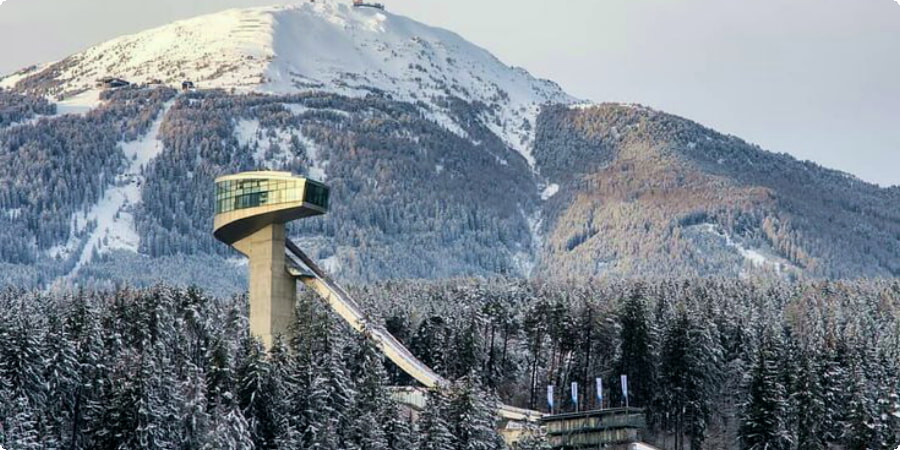
Innsbruck’s new university buildings, such as the Campus Technik, showcase the city’s commitment to cutting-edge design and sustainable architecture. These structures blend functionality with modern aesthetics, incorporating eco-friendly features such as green roofs, energy-efficient systems, and the use of recycled materials. The emphasis on sustainability reflects a growing trend in contemporary architecture that prioritizes environmental responsibility.
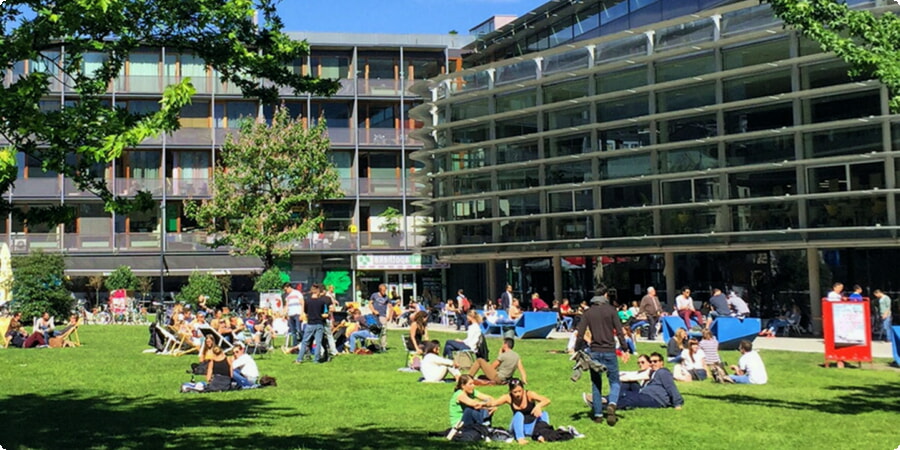
For those looking to explore Innsbruck in depth, professionally guided excursions offer a wealth of knowledge and insight into the city’s architectural heritage. Consider joining a guided tour through City Planet to gain a deeper understanding of Innsbruck’s diverse architectural styles and their historical significance.
Innsbruck’s contemporary architecture highlights the city’s ongoing evolution and its ability to balance tradition with modernity. The innovative designs and sustainable practices of the 21st century ensure that Innsbruck remains a vibrant and forward-looking city for generations to come.
Exploring Innsbruck: Practical Tips and Recommendations
Innsbruck’s architectural diversity is best explored at your own pace, allowing you to fully appreciate the city’s rich history and stunning landscapes. Whether you’re interested in medieval landmarks, modernist marvels, or contemporary creations, Innsbruck offers a wealth of attractions to discover.
To make the most of your visit, consider renting a car to explore Innsbruck and its surroundings. With convenient car rental options available at Innsbruck Airport, such as through Solrentacar, you can enjoy the freedom to travel at your own pace and discover hidden gems both within the city and in the scenic Tyrolean countryside.
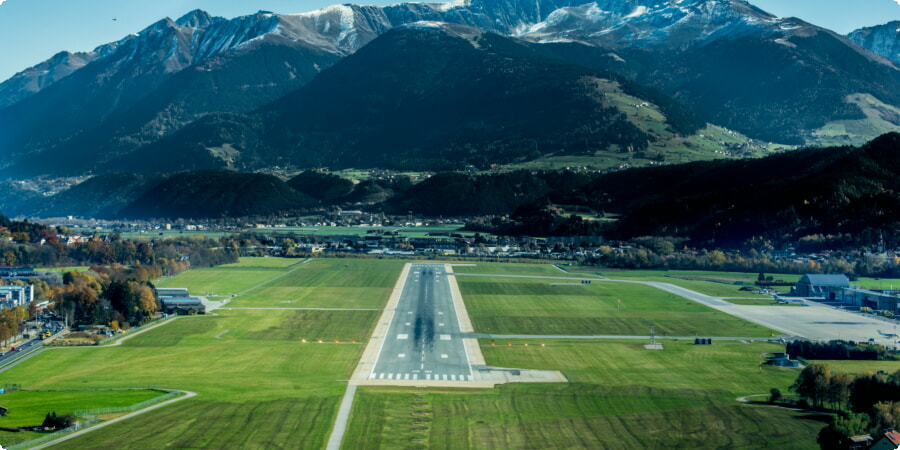
Alternatively, if you prefer a guided experience, professionally led excursions provide a wealth of knowledge and insights into Innsbruck’s architectural heritage. Companies like City Planet offer a range of tours that cater to different interests, ensuring you gain a comprehensive understanding of the city’s diverse architectural styles.
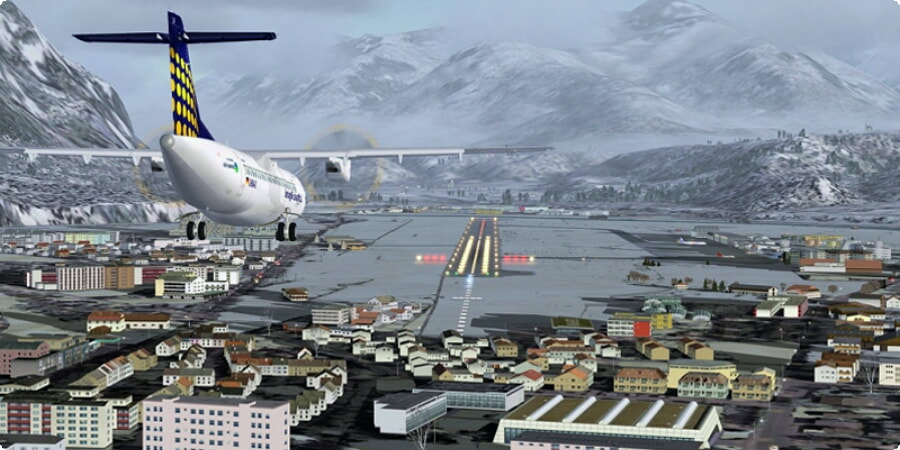
For those who prefer to explore on their own, choosing the right car rental option can greatly enhance your travel experience. Consider comparing car rental services in Innsbruck through platforms like Bookingcar to find the best deal that suits your needs and budget.
With its rich architectural heritage and stunning alpine backdrop, Innsbruck is a city that offers endless opportunities for exploration and discovery. Whether you’re a history enthusiast, an architecture aficionado, or simply looking for a scenic getaway, Innsbruck’s diverse architectural styles and welcoming charm make it a destination worth visiting.
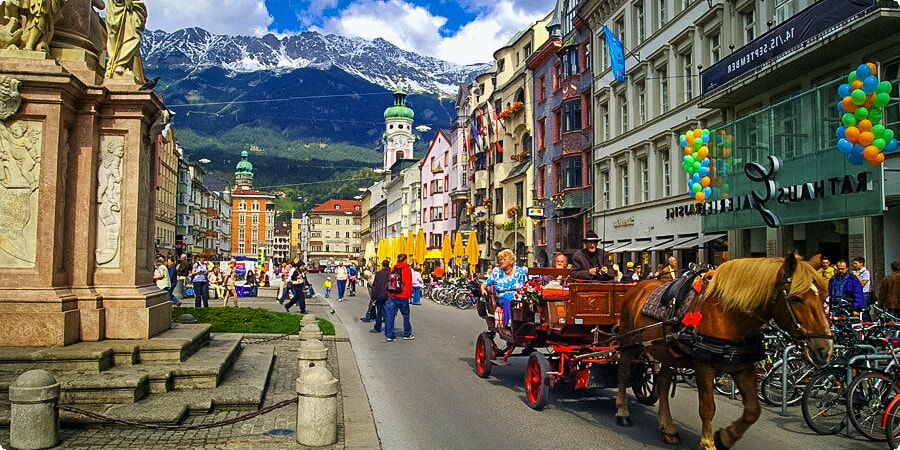
Innsbruck stands as a testament to the harmonious blend of historical depth and modern innovation. Each era has left its mark on the city, creating a rich tapestry of architectural styles that continue to captivate and inspire. As you wander through its streets and marvel at its landmarks, you’ll find yourself on a journey through time, experiencing the beauty and ingenuity that define this remarkable city.
